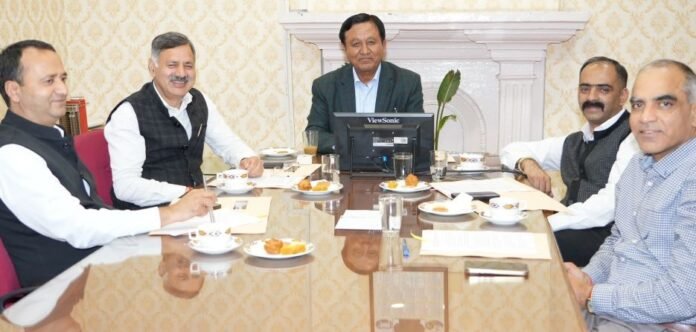In a proactive move aimed at strengthening disaster preparedness and climate resilience in one of India’s most ecologically sensitive states, the Himachal Pradesh cabinet sub-committee on disaster management and rehabilitation has approved a comprehensive Early Warning System (EWS). The decision, announced after a high-level meeting chaired by Revenue Minister Jagat Singh Negi, reflects the government’s renewed commitment to safeguarding lives and livelihoods amid the growing frequency of cloudbursts, flash floods, and landslides in the hilly state.
The recent spate of extreme weather events across Himachal Pradesh has brought large-scale disruption, with significant damage to roads, bridges, and water infrastructure. In response, the state administration has fast-tracked rehabilitation efforts, prioritizing the reconstruction of critical infrastructure in affected regions. The newly approved Early Warning System is expected to significantly boost real-time disaster forecasting capabilities. With advanced technology integrated into the EWS, authorities will now be better equipped to issue timely alerts and forecasts, enabling swift preventive action in vulnerable areas.
This upgraded early warning mechanism is not only aimed at enhancing forecasting but also at building a robust interface between scientific institutions, emergency services, and the local population. The system will facilitate seamless information flow, minimizing casualties and economic losses in disaster-prone districts.
The cabinet sub-committee also greenlit the use of a dedicated helicopter to expedite rescue and rehabilitation operations during emergencies. This strategic decision is expected to revolutionize the state’s response capabilities by enabling rapid deployment of relief personnel, medical aid, and essential supplies to inaccessible regions, especially during road blockages caused by landslides or river breaches.
The meeting, held in the wake of several high-impact natural disasters that battered the state this monsoon season, also witnessed critical deliberations on long-term rehabilitation planning. Among the top agenda items was the restoration of water supply schemes that have been severely affected in rural areas. The failure of water infrastructure in the wake of floods often leads to secondary health crises, and restoring these systems is crucial for ensuring public hygiene and access to clean drinking water.
In a related development, a separate session of the cabinet sub-committee, also presided over by Minister Jagat Singh Negi, addressed the longstanding issue of land regularization for small and marginal farmers. The committee resolved to file an appeal in the Supreme Court seeking Forest Conservation Act (FCA) concessions for the state. This is a significant policy move that could ease legal restrictions for farmers living in forest-adjacent lands and accelerate rural development while balancing ecological concerns.
The deliberations were attended by a team of senior officials, including Rural Development and Panchayati Raj Minister Anirudh Singh, Town and Country Planning Minister Rajesh Dharmani, Additional Chief Secretary (Revenue) Kamlesh Kumar Pant, and Special Secretary (Revenue-Disaster) D.C. Rana. Their presence emphasized the multi-departmental coordination necessary to implement a disaster management framework that is both preventive and responsive.
Himachal Pradesh, with its fragile Himalayan topography and rising climate vulnerability, has been at the forefront of India’s disaster-prone regions. In recent years, the impact of unseasonal rainfall, melting glaciers, and cloudbursts has intensified, underlining the urgent need for institutional preparedness. The launch of a robust early warning system marks a transformative step for the state and potentially sets a precedent for other hilly and ecologically vulnerable states in India.
As natural disasters grow in frequency and severity, the Himachal Pradesh government’s decisions this week reinforce a crucial message — that resilience is no longer an optional policy choice, but a strategic imperative. With data-driven technologies, streamlined rescue logistics, and legal reforms on land and resource access, the hill state is aligning itself with global standards of climate-smart governance.
#HimachalDisasterManagement #EarlyWarningSystem #ClimateResilience #JagatSinghNegi #HimachalFloods #FlashFloods #HimalayanDisasters #DisasterPreparedness #FCAReform #RuralDevelopment
This is an auto web-generated news story.





